TEI : WASTE WATER TREATMENT PACKAGE
A TURN-KEY AND MODULAR SYSTEM DESIGNED ACCORDING TO YOUR NEEDS
- Compact, self-operating and fully tested in our factory, the T.E.I. is easy to install and to operate with an efficient global cost compared to conventional systems.
- The stainless steel construction makes the T.E.I. a reliable installation. The design allows an outdoor installation whatever the weather conditions.
- The all in one T.E.I. can be easily moved if necessary.
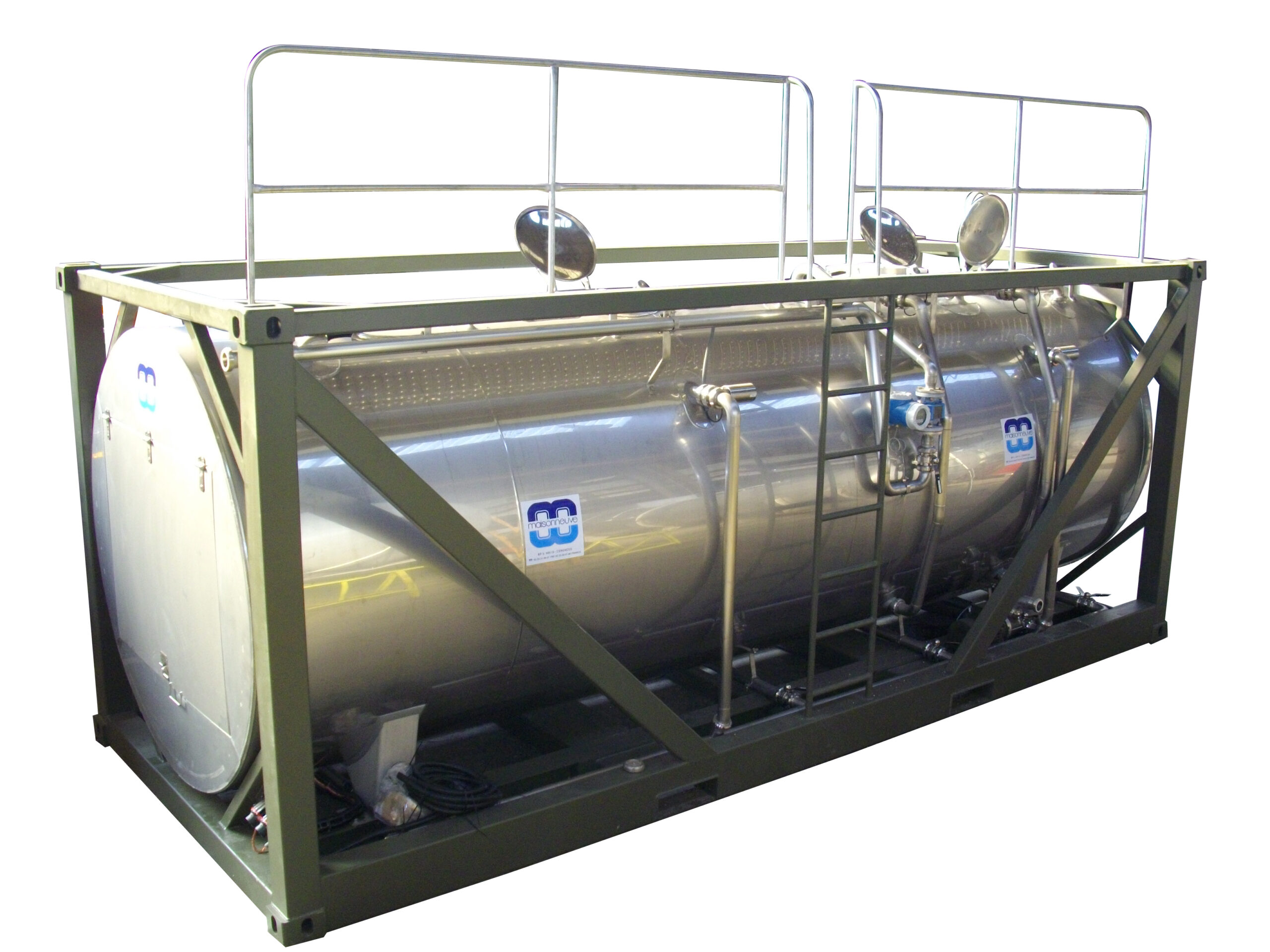
Adapted to the needs
Each unit is designed and manufactured according to
- Waste water loads and origin
- Weather conditions
- Geographical zone
- Available area
- Standards discharge
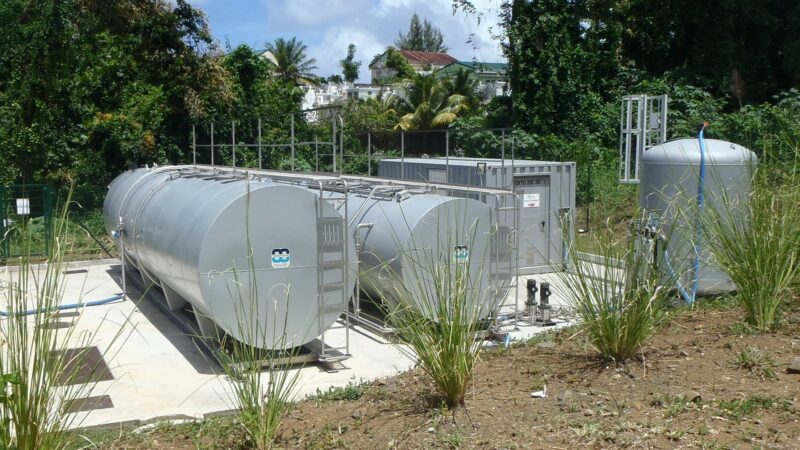
WASTE-TEI
NON COLLECTIVE SANITATION FACILITY WASTE TREATMENT
For the treatment of sanitation facilities waste water, we offer a turnkey system that can be adapted to your needs. The origins of wastewater include liquids and sludge extracted from autonomous sanitation systems such as septic tanks, all-water tanks, micro-purification plants and lagoons and also all sludges and liquids coming form urban network.
Our treatment approach is flexible, and can be adapted to suit specific site data, existing facilities and choice of discharge with possibility of reuse, ensuring effective, customized management for every situation.
The overall process breaks down as follows:
- Discharge of septage “A”, with automated counting, into a pre-treatment unit consisting of a pebble trap, in-line grinder and bar screen.
- Volume reduction of sludge “B” by physical-chemical means in filtering skips to eliminate the non-soluble fraction.
- Secondary treatment “C” by biological treatment of the dewatering water in the filter tanks to eliminate the soluble and biodegradable fraction.
- Tertiary treatment “D” by filtration and disinfection if necessary or if the water is to be reused.
- Dewatering of sludge “B” from biological treatment in the filter tanks.
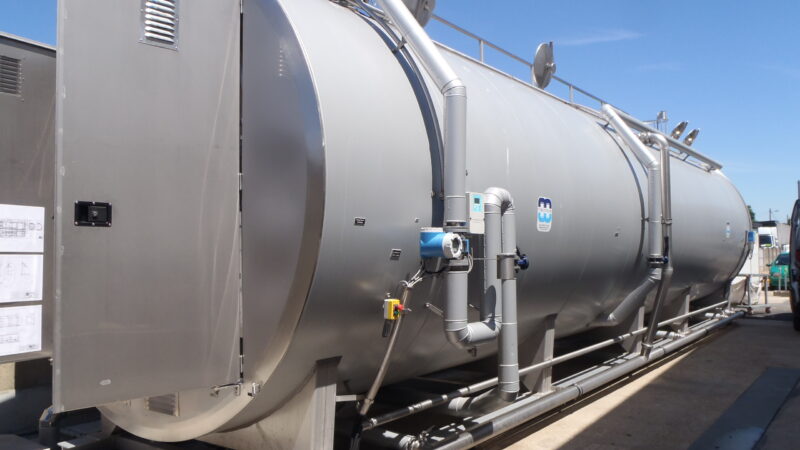
CLEAN-TEI
TRUCK WASH WASTE WATER TREATMENT
In the case of a washing station, wastewater is generated by the external washing of trucks and/or the internal washing of tanks. This water contains various types of pollutants, notably insoluble pollution generated by suspended matter of organic or mineral origin, as well as grease and hydrocarbons, and soluble pollution due to organic and chemical products.
To treat these waters effectively, we offer treatment processes adapted to each situation, taking into account site-specific data such as the type of wash, the number of vehicles per day, the products transported and the destination of the treated water with a possibility to reuse it.
- Primary treatment “A” in an oil separator to remove heavy, oily particles.
- Secondary treatment “B” in the T.E.I. by physical-chemical means to eliminate the non-soluble fraction and by biological means for the soluble and biodegradable fraction.
- Tertiary treatment “C” if required or if water is to be reused.
- Drying of sludge “D”, depending on its type, on big bags, filtering skips or filter presses.
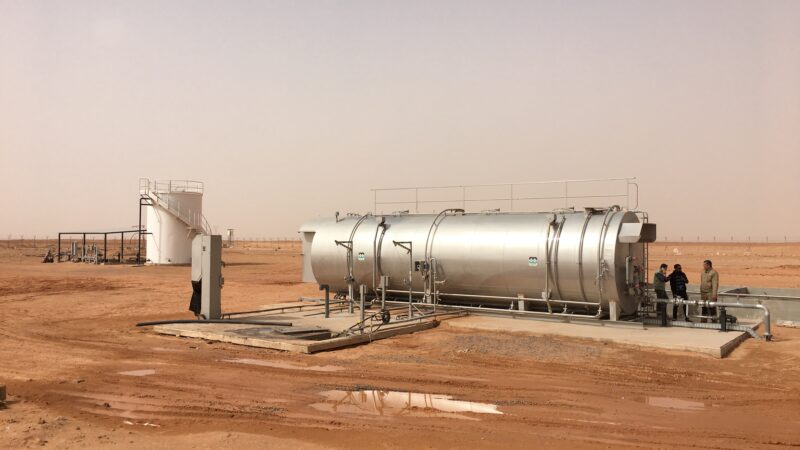
SEWA-TEI
SEWAGE TREATMENT UNITS
For sewage treatment, we handle water from a non-collective sanitation facility, toilets, showers, kitchens, laundries and the infirmary, from a living base accommodating between 100 and 5,000 people. This water can come from a variety of sources, such as military camps, tourist areas, hospitals, offshore platforms or emergency situations requiring a mobile solution.
Our treatment approach is flexible, adapting to the particularities of each site, existing facilities and choice of discharge or reuse. All our units are specifically designed to meet the most stringent climatic requirements, guaranteeing optimum efficiency in a wide range of conditions.
The overall treatment process comprises several stages:
- Raw water pre-treatment (stage A) involves the use of a manual or automated degreasing and screening system, as well as the removal of undesirable matter.
- Homogenization (stage B) takes place in a civil engineering or steel tank equipped with an agitation and/or aeration system, to buffer the water load and flow.
- Biological treatment (stage C) is carried out to eliminate the soluble and biodegradable fraction of the water.
If the water is to be reused, tertiary treatment (stage D) is carried out, including filtration and disinfection.
Finally, the sludge from biological treatment is dewatered (stage E) using devices such as big bags, drying beds or filter presses.
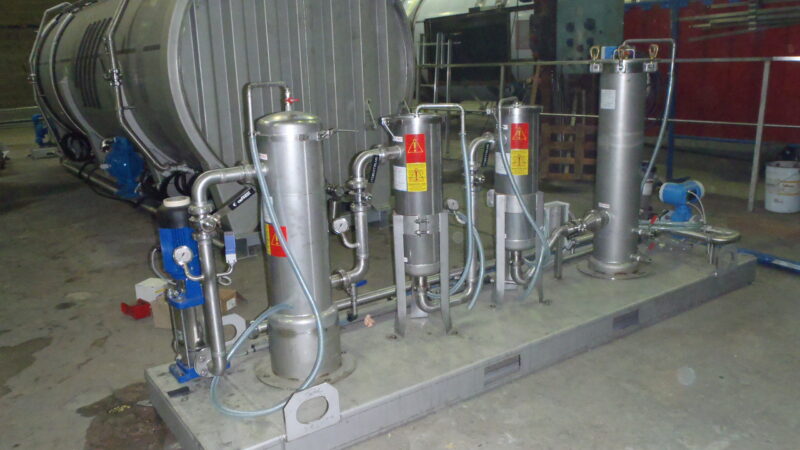
INDUS-TEI
INDUSTRIAL WASTE WATER TREATMENT
For industrial wastewater treatment, we handle water from a variety of industries, including surface treatment, paint, cosmetics, petrochemicals and food processing. These waters can contain different types of pollutants, including insoluble pollution caused by suspended solids of organic or mineral origin, as well as grease and hydrocarbons, and soluble pollution caused by organic and chemical products.
For each industrial wastewater treatment process, we propose a tailor-made approach based on the precise data of the effluent to be treated, including its concentration and flow rate standards discharge and possibility of reuse.
Primary treatment (stage A) begins with the use of an oil separator to remove heavy and oily particles, complemented by a bar screen to remove unwanted matter.
Secondary treatment (stage B) is then divided into two stages: a physico-chemical stage in the T.E.I. to eliminate the non-soluble fraction, and a biological stage to treat the soluble and biodegradable fraction.
If necessary, tertiary treatment (stage C) can be applied, particularly in the case of water reuse.
Finally, the sludge resulting from treatment (stage D) is dried, depending on its type, either in big bags, in a filtering skip or via a filter press.
Designed according to customer’s requests
AREA OF USE : designed for industrial sites, onshore sites, off-shore platforms, military camps or emergency situations.
OVERALL DIMENSIONS: size is adjusted according to the sites needs.
TRANSPORTATION : Each unit is specially designed and packed according to the freight means (road, sea, air) and equipped with the needed facilities: frame, hook lift arm, 20 or 40 feet ISO containers, side-opening containers.
WEATHER : In case of low temperatures, the tanks and the pipes are insulated and/or equipped with a heat tracing system.
SUPERVISION : Standard units are supplied with a local control panel. Upon request, further supervision units can be provided (remote alarm, monitoring, and remote management system).
CONTACT : SÉVERINE LE ROUX
Responsable Division Water Systems
